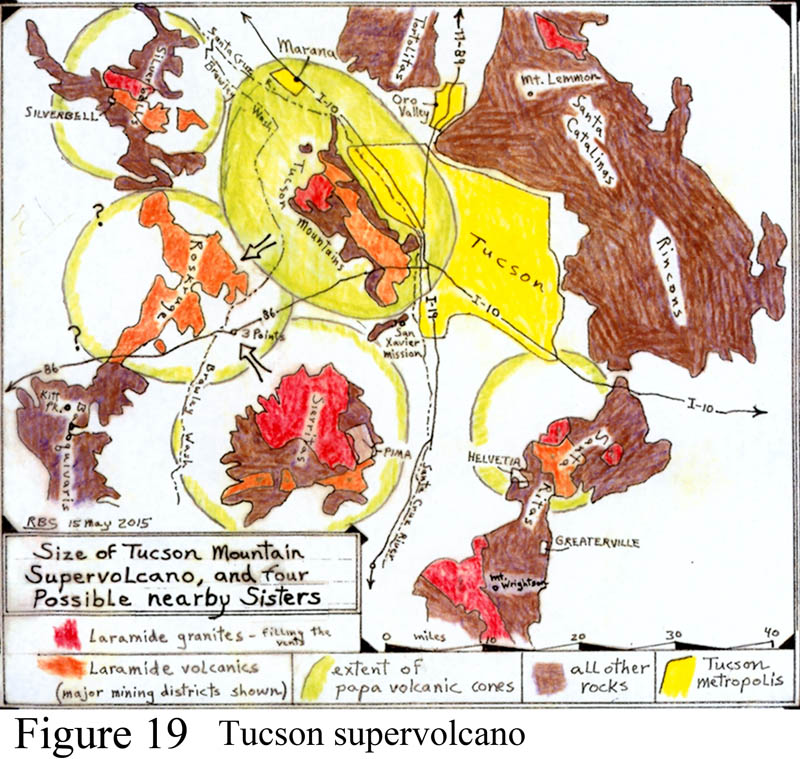Figure 19. Sketch Map of the Tucson Mountains supervolcano. (discussed above) Also shown on geologic map, Figure 30. A basal unit of the volcanic blowout is called the 'chaos' unit, which is a huge thick pile of older rock debris and rhyolite blowout 'breccia' (broken-up rock) which is seen on the Tucson city (east) side. Figure 19 maps the chaos unit distribution. Blocks of Paleozoic limestone the size of apartment buildings were blown out of the vent and shoved 6 miles southward during some initial explosion. You can easily see some of them even in your car (take Camino de Oeste north from Speedway, then turn left (westward) on Trails End Road). Big blocks of gray limestone litter the landscape, with houses built among them. The blocks are bigger than the houses. A still larger block is seen on the west side of the main mountain ridge from Kinney Road, while parked north of 'Old Tucson' movie location site and south of the Desert Museum - look to the high mountain ridge just before sunset (and not in the morningtime) just below and to the right of the big TV towers, and see a flat gray-colored block buried in the rhyolite flows, 2/3 the way up the ridge. It had to be shoved there after being blown out of the vent, which lay miles to the north (left). A HUGE explosion.
(Bonus trek in Tucson Mts: Ask me about a great walk from Kinney Road up Arrastra Wash (near MP 4 marker on Kinney Rd ~1 mile south of the Desert Museum), where you can view Cretaceous marine beds, find real dinosaur footprints and fossils of tree limbs in an old wet mud layer, and wind up in highly altered volcanic rocks at an old ore processing station with several intact arrastras used for grinding gold-silver-copper ore found in the Laramide volcanics. An arrastra is a circular stone arrangements powered by horse or mule where a heavy stone crushes ore to dust in a circular stone-lined pit - the process originating in Spain-Italy in B.C. times. This station may have been used in the early 1700s, mentioned in old records at San Xavier mission. I have seen a water-powered arrastra in modern use in Sonora.) There is a reconstructed arrastra along the highway north from Silver City to Gila Cliff Dwellings National Monument in New Mexico - watch for the sign.
